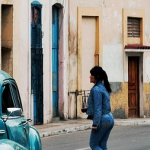On 7 September 2018, Legislative Decree No. 1397 (LD 1397) was issued, which modifies Legislative Decree No. 1075, which approves complementary provisions to Decision 486 of the Commission of the Andean Community, Industrial Property Law.
The most relevant modifications incorporated are the following:
Trademark Office:
Incorporation of the Geographic Indications (GI) and Traditional Specialities Guaranteed (TSG) as new elements constituting industrial property; however, our community regulation – Decision 486 of the Commission of the Andean Community – does not include them.
It must be mentioned that the TSG seeks to protect traditional prescriptions and methods of production or transformation that correspond to traditional practices, and to inform consumers of the characteristics of the products.
Patent Office:
In patent oppositions a period of two business days has been established for addressing the formal requirements for filing and opposition, namely, the payment of official fees, the filing of the power of attorney as well as the grounds for the opposition and proof. If the observations are not corrected within the aforementioned period, the Patent Office will not recognize the filling of the opposition.
With regard to the notification of the Patentability Examination (Office Action), according to the criteria in force up to September 2018, the Patent Office was obliged to only issue the first Office Action (OA), granting a period of 60 working days, with the possibility of renewing said time period, so that the applicant can respond to the observations of the Examiner. In this way, by issuing subsequent OAs, the Patent Office could provide notification in accordance with discretion, and in the case that it considered it was not necessary to communicate a subsequent OA, it instead issued a Notice with the conclusions of the OA, granting a non-renewable period of six (6) business days for the applicant to file arguments and/or amendments.
Now, with LD 1397, said discretion has been formalized, establishing that the subsequent OAs shall be issued only if they contain new elements not included in the first OA, for which the Patent Office will grant a renewable time period of 60 business days so that the applicant can respond to the observations of the Examiner.In case that subsequent OAs reiterate the first OA arguments, the Patent Office will provide a Notice with the conclusion of the mentioned OA and issue a resolution based on said underlying principles, against which legal remedies of reconsideration and appeal may be filed.
The remedies of reconsideration and appeal in patent procedures cannot be based on the modification of the specification, claims, and/or drawings. Although this has been implemented in our local practice, by issuing LD 1397, this criterion is made formal.
This implies that in the case that the applicant does not comply by responding to the OA within the legal time period (60 business days starting on the first OA, or 1 business day for subsequent OAs), the Patent Office shall issue its decision based on the conclusions of the last non-contested OA and it will no longer be possible to make modifications to the technical document in order to address the observations of the Examiner, and therefore the only alternative will be to file a remedy of reconsideration or appeal and a divisional application.
With respect to divisional or fractional patent applications, according to local practices, before LD 1397, it was possible to file a divisional application identical to the parent application, which was commonly done to respond to and correct the observations made by the Examiner when the first administrative instance concluded; however, the new LD 1397 establishes that the claims of the divisional application must obligatorily be different from those being processed in the application initially filed, no able to have the same scope.
For more information, please contact Jimena Ugarte, Technical and Legal Services Director of Clarke, Modet & Cº Peru (jugarte@clarkemodet.com.pe).
You may consult Legislative Decree No. 1397 here (only Spanish version)






